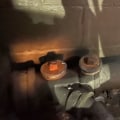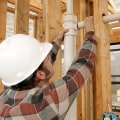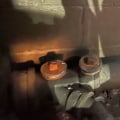The bad taste or smell of the water is a telltale sign that your pipes could be deteriorating. All household components, including plumbing, have an age limit. Brass, cast iron and galvanized steel pipes last between 80 and 100 years, while copper pipes last 70 to 80 years and PVC pipes can last up to 40 years with proper care. High water pressure and hard water reservoirs can reduce the lifespan of your pipes.
Leaks are a common plumbing issue, but they can also indicate a bigger problem. If you notice frequent pipe leaks, it's best to consult a professional to determine if replacing them is the best option. Sometimes, a small leak can be repaired or patched up. Other times, a visible leak is just a symptom of a larger leak deep in the pipe.
Rust in the water is another indication that your pipes are deteriorating; metal pipes can have rust inside them, with pieces that break off and get into the water. Over time, rust and corrosion will make holes in the pipes. Older homes often have old plumbing systems that are more prone to backups and major leaks. When the condition of the pipes deteriorates to a certain extent, they will need to be replaced.
The more pipes break, the greater the risk of leaks or breakage, and the more expensive repairs will be. Different types of materials used to build pipes influence their lifespan; as pipes decay, pieces of rusty metal break off and flow into the water supply, coloring it. Even with careful maintenance, you'll eventually have to replace your pipes. You may notice wet spots on the floors, walls or ceilings of your home, but sometimes the pipes can be hidden very well, making it difficult to detect any signs of moisture.
If you have exposed pipes in your home, such as visible pipes in the basement, you can more easily detect corrosion and other problems like peeling, discolored pipes, bumps on pipes and dimples. This includes not only the kitchen or bathroom pipes that you're going to be redoing, but also any pipes that go through the walls to feed the bathrooms upstairs. Frequent blockages may indicate a bigger problem with your pipes. In homes with plaster walls, wood paneling or other features that make it difficult to access buried pipes, consider replacing at least those that are not hidden in the walls. When filling up your bathtub, take note of the color of the water after it has been sitting in the pipes for a while.
If exposed pipes are corroded, it's likely that covered pipes have suffered similar damage and need to be replaced as soon as possible. Old iron pipes can also be responsible for reduced water pressure due to clogging from rust over time. It's important to pay attention to any signs that your plumbing system is deteriorating so you can take action before it's too late. If you notice any of these signs in your home, contact a professional plumber right away for an inspection and advice on whether you should replace your plumbing system.




Leave a Comment